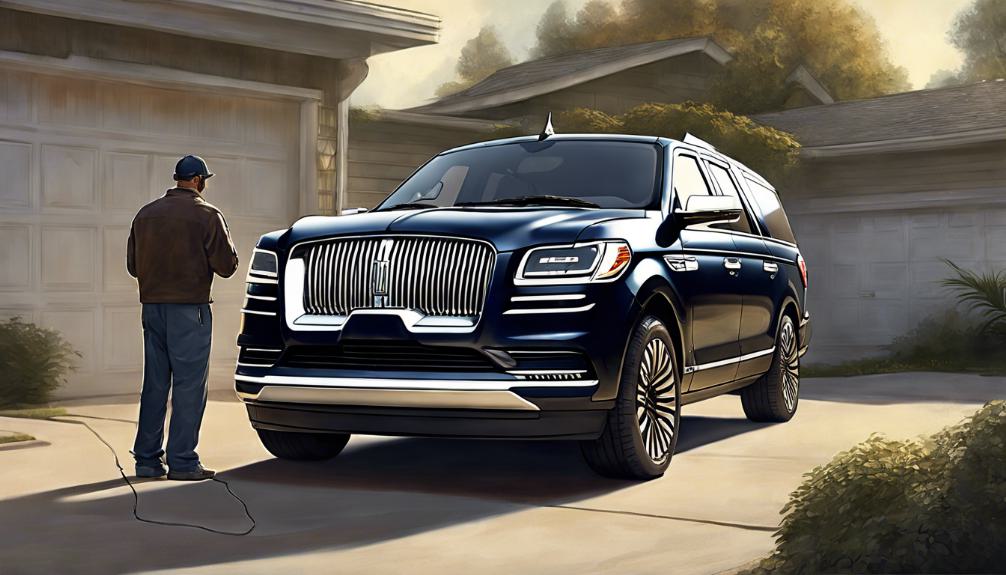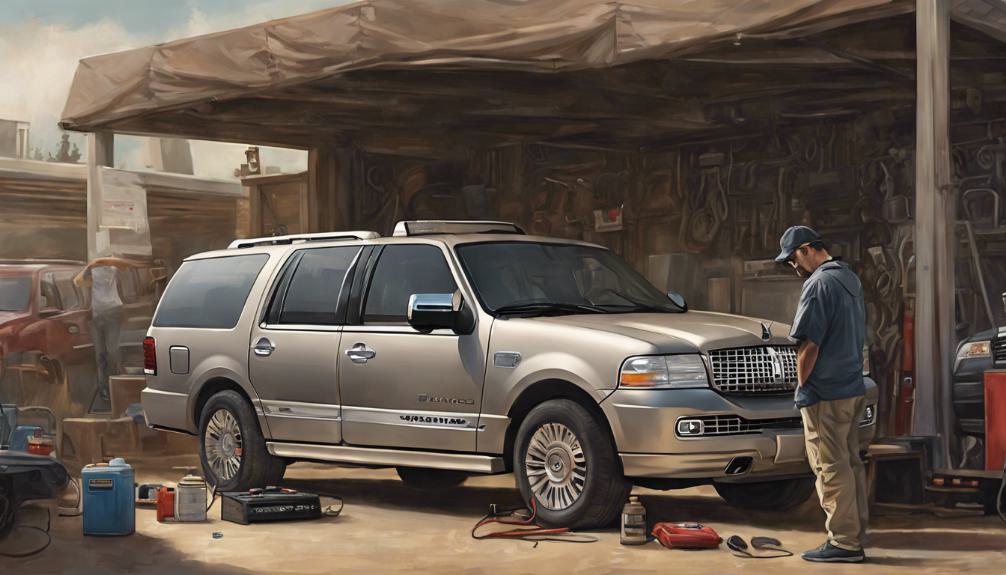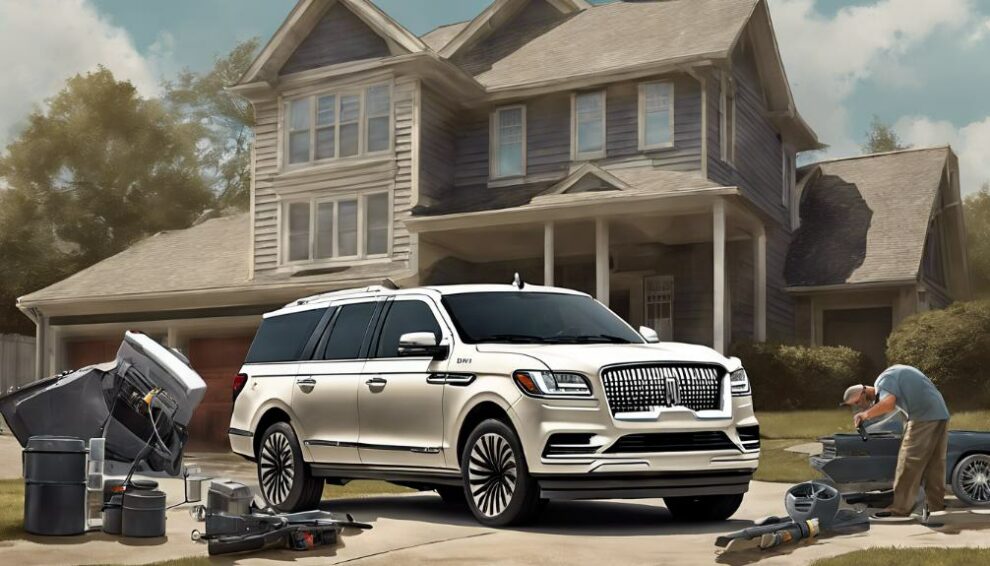When it comes to the Lincoln Navigator’s reliability, it’s known for enduring neglect well and offering good long-term performance.
However, be aware of common faults like air suspension issues, engine problems, and electronic malfunctions.
Pay attention to stalling, knocking sounds, and transmission failures. Regular maintenance such as oil changes is essential for trouble-free ownership.
If starting problems arise, check the fuel pump and drive safely in limp mode. To diagnose technical issues, focus on battery notifications and loose ground connectors. Seek professional diagnosis and repairs promptly for best results.
More insights await on how to address these common faults.
What You Need to Know
- Owners praise Navigator’s reliability even with neglect.
- Common faults include air suspension and engine issues.
- Technical faults need systematic diagnosis for resolution.
- Unreliable features like wireless charger may cost up to $400.
- Modifications can void warranty and impact repair coverage.
Lincoln Navigator Reliability Overview

When considering the Lincoln Navigator’s reliability, owners often praise its ability to withstand neglect and still perform well.
The Navigator has shown good long-term performance, with many owners experiencing trouble-free ownership even with negligent maintenance practices.
To maintain this reliability, some key maintenance tips include regular oil changes, tire rotations, and fluid checks.
Keeping up with scheduled maintenance tasks can help prevent minor wear-and-tear issues like burnt-out lights and axle seal fixes that have been reported by some owners.
The Navigator, known for its durability and reliability, is comparable to the Ford Expedition regarding its sturdy build quality and spaciousness.
By following recommended maintenance schedules and addressing any issues promptly, you can ensure that your Lincoln Navigator continues to provide a dependable and enjoyable driving experience for many miles to come.
Common Faults in Lincoln Navigator
If you own a Lincoln Navigator, you may encounter common faults such as air suspension issues and engine problems.
The air suspension system in the Navigator is known to have failures, leading to issues with the vehicle’s ride comfort and stability.
Engine reliability can also be a concern, with reported problems like stalling and knocking sounds that affect performance.
In addition to these, electronics malfunctions, transmission failures, and complaints about the electrical system, especially related to the lift gate, are common in this model.
When experiencing air suspension problems, it’s important to have a professional diagnose and repair any leaks, faults in the compressor, or issues with the air springs.
For engine issues, regular maintenance checks and timely repairs can help prevent major failures. Being attentive to warning signs like strange engine noises or performance issues can save you from costly repairs down the road.
Addressing Starting Problems

To address starting problems in your Lincoln Navigator, consider checking for issues with the fuel pump.
Starting problems can sometimes be linked to fuel pump issues, which may lead to the vehicle going into limp mode.
When in limp mode, the Navigator’s speed is limited to around 20 mph as a protective measure. If you encounter starting issues, it’s important to drive safely in limp mode to prevent further damage to the vehicle.
Ford dealerships often diagnose starting problems related to fuel pump issues, and these may be covered under warranty.
Resolving starting problems may involve repairs or replacements, which could be included in the manufacturer’s warranty, depending on the specific issue at hand.
Technical Issues Diagnosis
Diagnosing technical issues in your Lincoln Navigator requires a systematic approach to identify and resolve potential faults efficiently.
When facing electrical troubleshooting, pay close attention to battery notifications indicating deep sleep mode, as they can point to underlying electrical problems.
Also, check for loose ground connectors on the driver-side kick panel, as these can often lead to electrical issues.
If you encounter problems with the running boards failing to retract or deploy, it’s commonly due to faulty motors that may need replacement.
For interior issues like rear passenger seats moving unexpectedly, a faulty structure could be the root cause. Excessive condensation on the windshield is frequently caused by a stuck recirculating vent.
To address these technical issues effectively, consider utilizing diagnostic techniques, maintenance tips, and repair solutions tailored to each specific problem.
By following these steps attentively, you can ensure a smoother driving experience in your Lincoln Navigator.
Unreliable Features Investigation

When investigating the unreliable features of the Lincoln Navigator, focus on issues with the wireless charger, backup camera, and shaking mirror.
Repair costs for these problems, such as the wireless charger malfunctioning, can reach up to $400 and may not be covered under warranty.
It’s important to note that modifications to the vehicle, like deleting paint and chrome, can impact warranty coverage, potentially leading to additional expenses for repairs.
Technical issues left unresolved, such as the backup camera displaying a black screen, can greatly affect the usability and functionality of your vehicle.
To mitigate potential financial losses related to these unreliable features, consider seeking alternative solutions and exploring options for repairs.
Understanding the implications of these problems and taking proactive steps can help you address issues efficiently and effectively.
Stay informed about the repair costs and warranty coverage to make informed decisions when dealing with unreliable features in your Lincoln Navigator.
Warranty Complications Analysis
Considering modifications like paint and chrome deletion can void your Lincoln Navigator’s warranty, it’s important to understand how these changes may impact repair coverage and costs.
Warranty implications arise when modifications are made to your vehicle, potentially leading to repair expenses not covered under warranty.
If your warranty is voided due to these alterations, Ford may require additional charges for repairs on affected components. This can result in increased complexity and costs in resolving issues that arise.
It’s essential to carefully consider any modifications to your Lincoln Navigator to avoid warranty complications and unforeseen expenses.
By staying mindful of the potential impact of modifications on your warranty coverage, you can make informed decisions that align with your maintenance and repair needs.
Be proactive in evaluating the warranty implications of any changes you plan to make to your vehicle to ensure you’re prepared for any additional costs that may arise.
As an Amazon Associate we earn from qualifying purchases.










